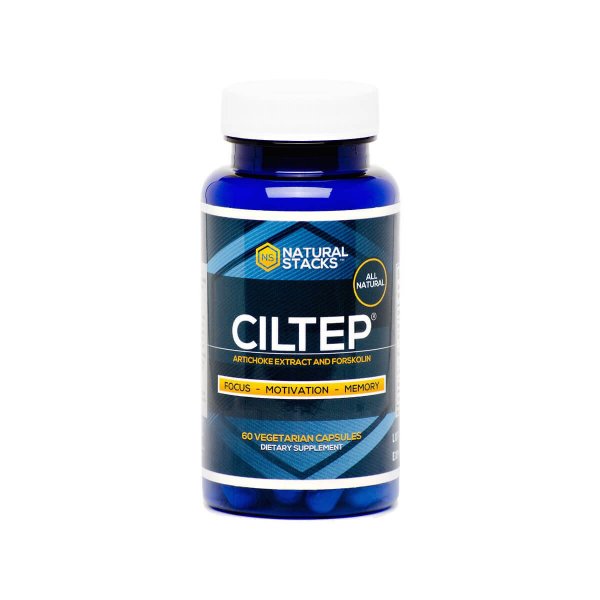"Nootropic" is the term for supplements that are said to improve our mental abilities such as concentration and memory. CILTEP is included in this category and has quickly become very popular around the world. It is also unique in being fully permitted in Sweden, unlike several other known nootropics.
Read more: Memory Champion Mattias Ribbings blind test of CILTEP
Function
The development of CILTEP was inspired by Nobel prize winner Eric Kandel's work. He discovered how synapses efficacy can be changed and which molecular mechanisms that are involved in this. Kandel also showed how synaptic function are central for memory and learning. One of Kandel's discoveries showes how the molecular building block cAMP (cyclic adenosine monophosphate) plays a central role in the formation of memories. cAMP acts as a second messenger for several neurotransmitters and hormones inside the cells. cAMP is degraded by the enzyme phosphodiesterase type 4 (PDE4).
Kandel's research team got astounding results when they managed to medically prevent PDE4s breakdown of cAMP in mice. The mice suddenly began to navigate faster in the mazes (1). This was the start that made PDE4 inhibitors to a new research area where one could observe everything from better memory (2) and neuron-protective effect (3) (4), increased alertness (5) and anti-inflammatory properties (6). The ability to treat a variety of brain-related disorders have also been investigated (7).
The idea behind CILTEP was to produce an optimal combination of natural ingredients that inhibit PDE4 and prolongs the time that cAMP is present in the cells. cAMP activates a protein called CREB, which has a well-documented role in the plasticity of the brain cells and the formation of long term memory (8). CREB is important for so-called Long-term potentiation (LTP) (9), which is the persistent strengthening of simultaneous activation of the synapses in the brain. This is considered by many to be physiologically essential in creating memories. The word CILTEP is short for Chemically Induced Long term potentiation.
Ingredients:
Artichoke extract contains the substance luteolin (10) that has been shown to act as effective inhibitors of PDE4 (11). It also inhibits PDE type 1 to 5, which has been shown to promote synaptic plasticity and memory (12) (13).
Forskolin is produced from the plant Makandi and has long been used in traditional Ayurvedic medicine. The topic has been studied comprehensively in modern research and it has been shown effective in increase the levels of cAMP in the cells (14). Forskolin is paired with luteolinet to work together for a stronger effect.
L-Phenylalanine is an essential amino acid and a natural precursor to dopamine. When CREB is activated, cells increase their dopamine metabolism trough the activation of the enzyme tyrosine hydroxylase (15). L-phenylalanine is added to provide necessary fuel.
Vitamin B6 is required for the conversion of L-fenylalnin into dopamine. The substance is included in the "stack" to achieve the optimal dopamine levels in the higher turn-over during the CREB-enabled LTP.
Acetyl L-carnitine is a form of the amino acid L-carnitine. Both are found in food and can be produced by the liver. Acetyl L-carnitine has been shown to increase levels of the neurotransmitter acetylcholine in the brain (16). cAMP activated forskolin increases the levels of the enzyme acetylcholinesterase (17), which breaks down acetylcholine. Acetyl-l-carnitine has therefor been added to counteract this and can theoretically provide increased energy and better short-term memory.
/ Mattias Ribbing
Referenser
1) http://www.forbes.com/global/2002/0204/060.html
2) Rolipram, a type IV-specific phosphodiesterase inhibitor, facilitates the establishment of long-lasting long-term potentiation and improves memory. Barad M, Bourtchouladze R, Winder DG, Golan H, Kandel E. Proc Natl Acad Sci U S A. 1998 Dec 8;95(25):15020-5.
3) Rolipram reduces excitotoxic neuronal damage. Block F, Schmidt W, Nolden-Koch M, Schwarz M. Neuroreport. 2001 May 25;12(7):1507-11.
4) Broad spectrum neuroprotection profile of phosphodiesterase inhibitors as related to modulation of cell-cycle elements and caspase-3 activation. Chen RW, Williams AJ, Liao Z, Yao C, Tortella FC, Dave JR. Neurosci Lett. 2007 May 17;418(2):165-9. Epub 2007 Mar 18.
5) Rolipram, an antidepressant that increases the availability of cAMP, transiently enhances wakefulness in rats. Lelkes Z, Alföldi P, Erdos A, Benedek G. Pharmacol Biochem Behav. 1998 Aug;60(4):835-9.
6) "Intracellular Mechanisms of Inflammation:PDE4 Promotes the Release of Proinflammatory Mediators". Celgene Corporation. 2012. Retrieved 2012-07-24.
7) http://en.wikipedia.org/wiki/Phosphodiesterase-4_inhibitor
8) http://en.wikipedia.org/wiki/CREB
9) A Functional Role for CREB as a Positive Regulator of Memory Formation and LTP. Kida S. Exp Neurobiol. 2012 Dec;21(4):136-40. doi: 10.5607/en.2012.21.4.136. Epub 2012 Dec 26.
10) Luteolin-rich artichoke extract protects low density lipoprotein from oxidation in vitro. Brown JE, Rice-Evans CA. Free Radic Res. 1998 Sep;29(3):247-55.
11) Luteolin, a non-selective competitive inhibitor of phosphodiesterases 1-5, displaced [3H]-rolipram from high-affinity rolipram binding sites and reversed xylazine/ketamine-induced anesthesia. Yu MC, Chen JH, Lai CY, Han CY, Ko WC. Eur J Pharmacol. 2010 Feb 10;627(1-3):269-75. doi: 10.1016/j.ejphar.2009.10.031. Epub 2009 Oct 22.
12) Prediction and validation of a mechanism to control the threshold for inhibitory synaptic plasticity. Kitagawa Y, Hirano T, Kawaguchi SY. Mol Syst Biol. 2009;5:280. doi: 10.1038/msb.2009.39. Epub 2009 Jun 16.
13) Role of phosphodiesterase 5 in synaptic plasticity and memory. Puzzo D, Sapienza S, Arancio O, Palmeri A. Neuropsychiatr Dis Treat. 2008 Apr;4(2):371-87.
14) Forskolin: a unique diterpene activator of cyclic AMP-generating systems. Seamon KB, Daly JW. J Cyclic Nucleotide Res. 1981;7(4):201-24.
15) CREB mediates the cAMP-responsiveness of the tyrosine hydroxylase gene: use of an antisense RNA strategy to produce CREB-deficient PC12 cell lines. Piech-Dumas KM, Tank AW. Brain Res Mol Brain Res. 1999 Jul 5;70(2):219-30.
16) Acetyl-L-carnitine as a precursor of acetylcholine.White HL, Scates PW. Neurochem Res. 1990 Jun;15(6):597-601.
17) Forskolin, an inducer of cAMP, up-regulates acetylcholinesterase expression and protects against organophosphate exposure in neuro 2A cells. Curtin BF, Pal N, Gordon RK, Nambiar MP. Mol Cell Biochem. 2006 Oct;290(1-2):23-32. Epub 2006 Aug 19.






